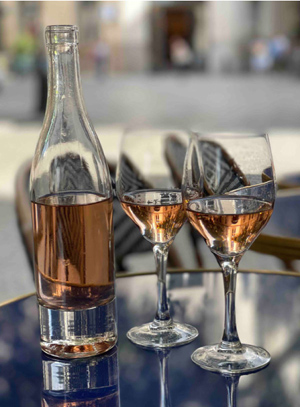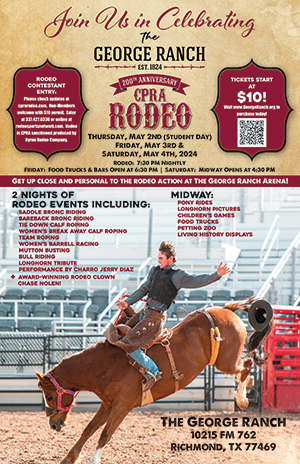Posted on Sep 1, 2022 in
THE DRUNKEN CYCLIST

The Drunken Cyclist
By Jeffrey M. Kralik, Ph.D.
www.thedrunkencyclist.com –
 Most of the month of August, I spent in France, split between perusing the capital, Paris and pedaling my way through the vineyards of the Loire Valley. There are a few elements about being in France I find particularly annoying: it seems every outdoor café is packed with smokers, the French seem to believe the best place for a discussion is smack-dab in the middle of a doorway, and just about everywhere I go, I am the tallest person for miles and get treated as a bit of a circus freak (although I am only 6’4”).
Most of the month of August, I spent in France, split between perusing the capital, Paris and pedaling my way through the vineyards of the Loire Valley. There are a few elements about being in France I find particularly annoying: it seems every outdoor café is packed with smokers, the French seem to believe the best place for a discussion is smack-dab in the middle of a doorway, and just about everywhere I go, I am the tallest person for miles and get treated as a bit of a circus freak (although I am only 6’4”).
The positives, however, far outweigh the negatives: it is really hard to eat poorly in France, the bike riding is among the best in the world, and nearly every bar, café and restaurant has their own “house” wine, and it is usually really good (and inexpensive). Sit down at the local café, the corner restaurant, or the neighborhood bar and order a “carafe de rosé” (or “blanc” or “rouge”), and you will soon be staring down a half liter pichet of a perfectly agreeable if not delightful unknown wine, for a fraction of what a labeled bottle would cost.
For some odd reason, the purveyors of these establishments keep the identities of their house wines rather close to the vest. I have asked a number of times for the producer of the lovely elixir in the carafe only to rebuffed with a smile, a laugh or even a waved finger (think Dikembe Mutumbo).
I have long hoped that proprietors in the U.S. would take up this model as there are times when I go out to eat, and I don’t want to have to think about the wine. It may be a burger, a pizza or even a homestyle pasta place where, let’s face it, no one is looking to put down three figures for a bottle of wine.
Since I am no longer holding my breath for that to happen, I suggest that you adopt at least the spirit of the concept at home: have a house white, a house red, and heck, even a house sparkling wine to have on hand when you order in pizza, have burger night, or even when your Uncle Cletus drops in unexpectedly.
Here are a few suggestions to bring the House Wine concept into your home. They are all good, relatively inexpensive and widely available in Texas.
 NV Gruet Winery Brut, New Mexico: Retail $15 (~$12 On The Shelf – OTS). 75% Chardonnay, 25% Pinot Noir. Long one of our go-to house sparklers, this has all you would want (zingy fruit, a touch of yeast, fine sparkle) for a fraction of the fancy French stuff. 89 Pts.
NV Gruet Winery Brut, New Mexico: Retail $15 (~$12 On The Shelf – OTS). 75% Chardonnay, 25% Pinot Noir. Long one of our go-to house sparklers, this has all you would want (zingy fruit, a touch of yeast, fine sparkle) for a fraction of the fancy French stuff. 89 Pts.
 NV Nino Franco Valdobbiadene Prosecco Superiore Rustico, Veneto, Italy: Retail $25 (~$20 OTS). 100% Glera. A step up from your parent’s prosecco, this has green apple a go-go, a bit of hazelnut and just an ever-so-slight touch of sweetness. It will recenter your notion of Prosecco. 91 Pts.
NV Nino Franco Valdobbiadene Prosecco Superiore Rustico, Veneto, Italy: Retail $25 (~$20 OTS). 100% Glera. A step up from your parent’s prosecco, this has green apple a go-go, a bit of hazelnut and just an ever-so-slight touch of sweetness. It will recenter your notion of Prosecco. 91 Pts.
2021 Mezzacorona Pinot Grigio, Trentino, Italy: Retail $15 ($8 OTS). I really don’t like about 80% of the Pinot Grigio out there, but this one, at under ten bucks, consistently knocks my socks off. I have told the makers that it is way underpriced, but they have not listened to me, yet. 92 Pts.

 2021 Chalk Hill Chardonnay, So-noma Coast, CA: Retail $25 (~$16 OTS). This Chard is far from an oak monster but one for those who don’t mind a little oak in their wine. Creamy, lemony and delicious, always consistently good. 90 Pts.
2021 Chalk Hill Chardonnay, So-noma Coast, CA: Retail $25 (~$16 OTS). This Chard is far from an oak monster but one for those who don’t mind a little oak in their wine. Creamy, lemony and delicious, always consistently good. 90 Pts.
2020 Stoller Chardonnay, Dundee Hills, OR: Retail $25 (~$18 OTS). An un-oaked Chard that I can really get behind. Tree and citrus fruit abound with plenty of tartness to hold it together. 89 Pts.
2019 Pasqua Passimento Rosso, Romeo & Juliet, Veneto, Italy: Retail $18 (~$13 OTS). 40% Merlot, 30% Corvina, 30% Croatina. A bit of a curve ball here, but I really love this wine as it is juicy, fruity and fun. An ideal BBQ wine. 92 Pts.


 2018 Rodney Strong Cabernet Sauvignon Estate Vineyards, Alexander Valley, CA: Retail $30 (~$21 OTS). This Estate wine is only a few bucks more than their Sonoma County Cab, but boy is it a whole bunch better, rich without being chewy, I dare you to find me a ribeye this won’t love. 91 Pts.
2018 Rodney Strong Cabernet Sauvignon Estate Vineyards, Alexander Valley, CA: Retail $30 (~$21 OTS). This Estate wine is only a few bucks more than their Sonoma County Cab, but boy is it a whole bunch better, rich without being chewy, I dare you to find me a ribeye this won’t love. 91 Pts.















 Most of the month of August, I spent in France, split between perusing the capital, Paris and pedaling my way through the vineyards of the Loire Valley. There are a few elements about being in France I find particularly annoying: it seems every outdoor café is packed with smokers, the French seem to believe the best place for a discussion is smack-dab in the middle of a doorway, and just about everywhere I go, I am the tallest person for miles and get treated as a bit of a circus freak (although I am only 6’4”).
Most of the month of August, I spent in France, split between perusing the capital, Paris and pedaling my way through the vineyards of the Loire Valley. There are a few elements about being in France I find particularly annoying: it seems every outdoor café is packed with smokers, the French seem to believe the best place for a discussion is smack-dab in the middle of a doorway, and just about everywhere I go, I am the tallest person for miles and get treated as a bit of a circus freak (although I am only 6’4”). NV Gruet Winery Brut, New Mexico:
NV Gruet Winery Brut, New Mexico: NV Nino Franco Valdobbiadene Prosecco Superiore Rustico, Veneto, Italy:
NV Nino Franco Valdobbiadene Prosecco Superiore Rustico, Veneto, Italy: 2021 Chalk Hill Chardonnay, So-noma Coast, CA:
2021 Chalk Hill Chardonnay, So-noma Coast, CA: 

 2018 Rodney Strong Cabernet Sauvignon Estate Vineyards, Alexander Valley, CA:
2018 Rodney Strong Cabernet Sauvignon Estate Vineyards, Alexander Valley, CA: